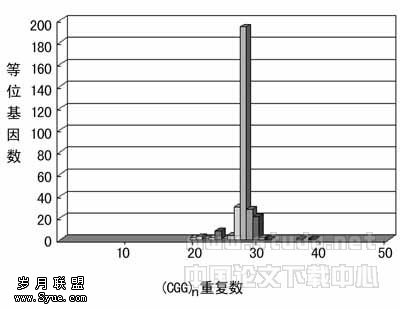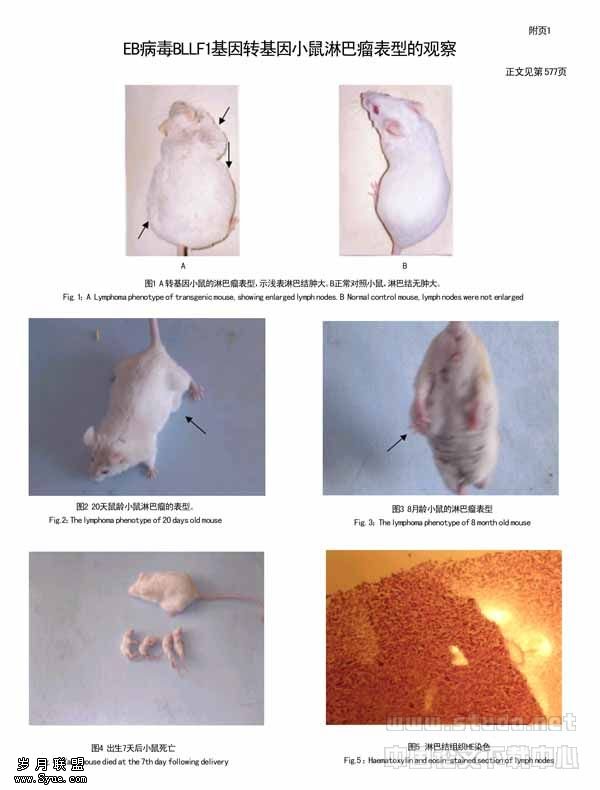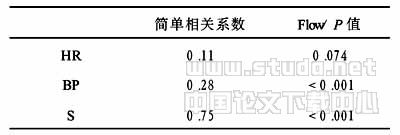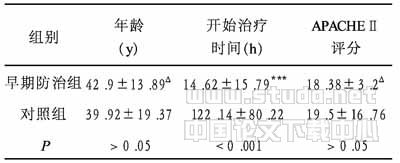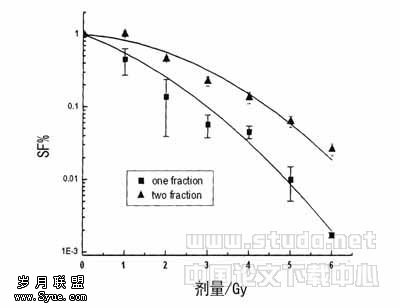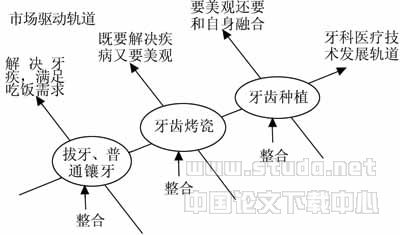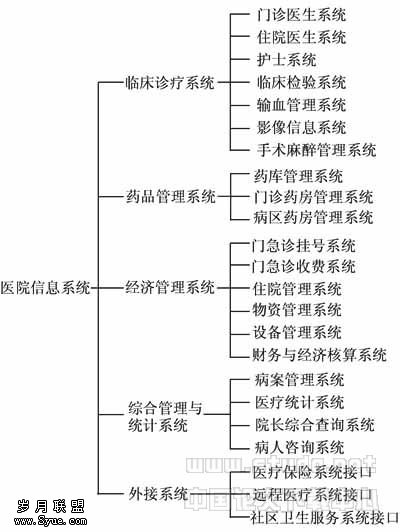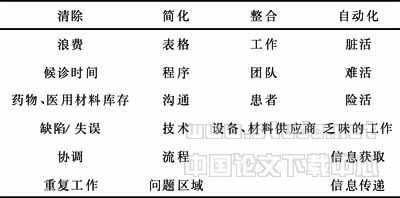神经酰胺的代谢在肿瘤化疗和耐药中的作用
【关键词】 肿瘤耐药 耐药逆转 神经酰胺 P?糖蛋白
肿瘤耐药是肿瘤失败最为重要的原因之一,癌症患者如果失去了手术根除病灶的时机便很少再有通过化疗治愈的可能。肿瘤细胞可通过多种机制引发耐药:减少细胞内药物的浓度,如P?糖蛋白(P?gp)介导的肿瘤多药耐药;加快药物的分解代谢;细胞内药物靶点的表达发生改变或突变;癌细胞的自我修复能力加强;癌细胞的生存能力,如抗凋亡能力加强等等。上世纪九十年代以来,大量研究发现神经酰胺(Ceramide,Cer)及其代谢产物作为鞘脂类家族成员,不仅是构成细胞膜结构的重要组分之一,还可作为脂质第二信使调节细胞的凋亡和增殖,并参与肿瘤细胞的耐药机制;此后又发现Cer的代谢与P?gp在诱导肿瘤多药耐药的过程中存在联系,改变了以往对于P?gp过于简单化的认识。本文主要就近年来对Cer的代谢在肿瘤治疗和耐药中的作用及耐药逆转策略的研究情况作一综述。
1 Cer的代谢过程及其代谢产物的生物学功能
Cer是鞘磷脂(Sphingomylin,SM)的基本单位,多种因素可刺激其产生,如生长因子剥夺、细胞因子、离子射线、热休克、细胞毒性物质及环境变化等,此外许多配体亦可以通过和相应受体结合启动Cer介导的细胞信号转导,如1,25?二羟?VitD3、TNF?α、CD28和FasL等。它可以在Cer合成酶的作用下由神经鞘氨醇(Sphinganine)乙酰化合成(De Novo synthesis,主要在内质网中,高尔基体、线粒体膜和核膜中可能也有);亦可以由鞘磷脂酶(Sphingomylinase,SMase)水解鞘磷脂产生(细胞浆膜和溶酶体中含有酸性鞘磷脂酶,而细胞膜穴样内陷中含有中性鞘磷脂酶) [1,2]。并通过以下代谢途径有效地调节其在细胞里的浓度[3]在鞘磷脂合成酶的作用下结合磷酸胆碱,形成鞘磷脂;先后在神经酰胺酶和鞘氨醇?1激酶的作用下转化为鞘氨醇?1?磷酸(S1P);在葡萄糖神经酰胺合成酶的作用下转变为神经节苷脂的前体??葡萄糖神经酰胺(Glucosylceramide,GlcCer)。
Cer可由以下途径发挥其生物学功能:由 CD95/APO?1/Fas或SAPK/JNK路径转导信号,导致细胞周期停滞、细胞分化及诱导凋亡[1];应激信号能激活酸性SMase水解细胞表面的鞘磷脂产生大量Cer,而Cer为多种受体如Fas交联、聚集成多聚体进而发挥生物学作用所必需[4,5];内质网中产生的Cer由相应的转运蛋白(CERT)运送到高尔基体后被水解为鞘氨醇,鞘氨醇累积导致大量液泡形成,最终致使高尔基体裂解、细胞骨架合成受阻、细胞形态学改变[6];Cer能调控端粒酶的活性,过多内源性的Cer对端粒酶产生抑制作用[7]。此外,Cer累积可通过多种途径引发Caspase级链反应导致细胞凋亡,但这种效应可被抗凋亡基因bcl?2过度表达而抵消[1]。
S1P既是一种特异性G蛋白偶连受体Edg的天然配体,还作为第二信使参与细胞内信号转导,促进钙离子流动、激活磷脂酶D、使p125FAK酪氨酸磷酸化并且抑制NF?κΒ和促进Akt磷酸化,从而刺激细胞增殖、抑制凋亡[8,9]。S1P的抗凋亡作用由其细胞内通路实现,并不依赖于其受体[10]。
GlcCer能促进、维持细胞增生,并中和Cer积累对细胞产生的毒性[11]。
2 Cer及其代谢产物在肿瘤化疗及耐药中的作用
许多化疗药物能通过不同的途径诱导Cer产生:如柔红霉素、长春新碱能活化中性SMase[3,12]而吉西他滨能活化酸性SMase[13]使SM水解产生Cer;又如依托铂甙能激活丝氨酸棕榈酰转移酶来促进Cer从头合成,最终导致Cer大量累积,产生细胞毒作用[14,15]。
Itoh等[16]发现在阿霉素的作用下,敏感细胞株HL?60中Cer的量明显增加,而耐药株HL?60/ADR却没有相应的变化,但其GCS和SM合成酶的活性却较敏感株明显增高。添加外源性Cer能够加强阿霉素在耐药株中的诱导凋亡作用。提示Cer通过GCS和SM合成酶的代谢过程可能与肿瘤耐药相关。
有研究发现诱导S1P裂解酶过度表达或抑制鞘氨醇激酶能增加肿瘤细胞对铂类化疗药物的敏感性,但是这种效应是有选择性的,如对阿霉素、5?Fu、依托铂甙、苯丁酸氮芥和长春新碱等无效。因为这种增敏效应是通过p38和MAPK介导的,而长春新碱的细胞毒作用并不依赖上述通路[17,18]。
Lavie等[19]发现耐长春碱的细胞株KB?V?1中GlcCer的量明显增多,而相应敏感细胞株KB?3?1却没有这种情况。同时多药耐药的OVCAR?3细胞亦有GlcCer表达增多,提示GlcCer可能参与肿瘤耐药。Liu等[20]把GCS基因导入对阿霉素敏感的MCF?7细胞(MCF?7/GCS),使其GCS的表达量为原来的11倍,结果MCF?7/GCS对阿霉素和Cer的耐受性较原来明显提高,其耐受程度同GCS活性成正相关。该小组又把GCS基因的反义核苷酸导入耐阿霉素细胞MCF?7?AdrR中构建成MCF?7?AdrR/asGCS[21]。用阿霉素处理该细胞时,细胞GCS表达减少,内源性的Cer和Caspase?3明显增多,并恢复了对该药的敏感性。
3 Cer的代谢产物与P?gp在肿瘤多药耐药中的联系
许多研究小组在工作中发现Cer的代谢与P?gp在诱导肿瘤耐药的过程中存在各种联系。如Gouaze等[22]发现耐长春碱的KB?3?1细胞株GlcCer的量随着耐药程度的提高而增加,其GCS和P?gp的mRNA、蛋白质表达水平同步提高。而且多种耐药细胞株都有类似情况,其中耐阿霉素的MCF?7细胞(MCF?7?AdrR,过度表达P?gp)的GCS启动子活性较相应敏感细胞增高15倍。他们[23]把GCS基因的反义核苷酸转染入MCF?7?AdrR细胞,结果细胞内Cer明显增多、神经节苷脂明显减少、和多种化疗药物接触后其细胞内的药物含量明显增高、P?gp的表达明显减少并不同程度的恢复了对相应药物的敏感性。
Shabbits等[24]用亚细胞毒浓度的GCS抑制剂PDMP能使MCF?7?AdrR细胞(过度表达GCS和P?gp)和转染了MDR1基因的MDA435/LCC6MDR1细胞(仅过度表达P?gp)恢复对紫杉醇和长春新碱的敏感性。当这两种细胞预先用P?gp阻滞剂(valspodar)处理后, PDMP对MCF7/Adr的作用减少了3倍,而对MDA435/LCC6MDR1无效。由此认为P?gp能调节Cer糖基化为GlcCer,并推测:P?gp能将GlcCer转运入高尔基体而减少因其在胞浆中积累对GCS产生的反馈抑制作用,有利于Cer不断转变为GlcCer。De Rosa MF等[25]证实P?gp具有GlcCer翻转酶的功能,能将GlcCer由高尔基体的胞浆面转运至腔内使其中的GlcCer、乳糖神经酰胺(LacCer)和神经酰胺三己糖苷等中性鞘糖酯的量明显增多。
Plo等[26]发现PDMP能使多株过度表达P?gp的白血病细胞恢复对药物的敏感性,并使细胞内出现Cer积累以及Cer的糖基化产物如GlcCer、LacCer、单涎神经节苷酯(GM3)和双涎神经节苷酯(GD3)减少。加入外源性的GM3和GD3能活化P?gp,而加入GlcCer和LacCer无效。进一步研究发现GM3,可能还有GD3能使KG1a/200细胞P?gp的丝氨酸残基磷酸化。认为至少在白血病细胞,神经节苷酯能使P?gp磷酸化来调节其功能,而PDMP能通过消耗神经节苷酯逆转耐药。
此外,细胞膜结构中的鞘脂类有利于维持P?gp的基本功能。P?gp定位于细胞膜的低密度抗去垢剂微区间,该区间含较多鞘脂类(有时还包括胆固醇)。一方面,鞘脂类及胆固醇的比例增加能改变药物分配系数,有利于药物进入细胞膜而在P?gp周围形成较高的局部药物浓度,提高药物和P?gp结合的效率。另外,鞘脂和胆固醇能增加细胞膜脂质双层的刚性,避免其中脂质成分水平移动,为P?gp提供了一个稳定的框架结构,有利于其和药物结合后发生构象变化和提高其ATP酶的催化效率[27]。
4 干扰Cer的代谢与肿瘤耐药逆转
由于Cer的代谢是一个动态平衡的过程,化疗药物诱导产生的Cer可能很快被代谢成无毒或具有抗凋亡作用的产物,如SM、S1P和GlcCer等。因此,可考虑在化疗方案中加入能够抑制Cer糖基化、抑制Cer水解及鞘氨醇磷酸化的药物;能够促进Cer从头合成及SM水解的药物以提高化疗效率,预防和逆转耐药。
Cer糖基化抑制剂:目前应用最多的为GCS特异性抑制剂PDMP、PPMP,主要用于Cer及其糖基化代谢产物的研究(如前所述)。它能提高Cer的量来增加肿瘤细胞对某些药物的敏感性;并能抑制细胞的药物泵作用而维持细胞内有效的药物浓度[28]。还有不少新的抑制GlcCer合成的药物正在研发阶段,如OGT2378[29],它能有效的减少肿瘤组织中GlcCer和神经节苷酯的量,小鼠肿瘤移植实验提示口服给药能明显减慢肿瘤的。另外,目前临床用于逆转MDR的药物如环孢素A﹑他莫西芬﹑维拉帕米等都有抑制Cer糖基化的作用[30]。
鞘氨醇激酶抑制剂:现有3种药物有抑制鞘氨醇激酶的作用:DMS、D,L?threo?二氢鞘氨醇和N,N,N?三甲基鞘氨醇。但这些药物并不直接作用于鞘氨醇激酶,而是通过调节蛋白激酶C﹑鞘氨醇依赖性蛋白激酶和酪蛋白激酶II来影响其的活性。目前以鞘氨醇激酶直接作为靶点的药物正在研发中[31]。
Cer类似物:Struckhoff AP等[32]研究认为4,6?二烯?Cer是目前作用最强的Cer类似物,它在类神经鞘骨架的C6~C7间有一个反式双键。在对TNF?α耐受和敏感的细胞株,4,6?二烯?Cer较Cer有更强的诱导凋亡的能力,提示4,6?二烯?Cer 等Cer类似物具有应用于肿瘤的潜力。
鞘磷脂类似物:Darroch等[33]报道了一种新的鞘磷脂的硫脲类衍生物:AD2765。该物质能被细胞摄取并抑制鞘磷脂水解,但又能抑制由Cer合成鞘磷脂的过程。这种抑制鞘磷脂代谢作用的效果是剂量依赖性的,当其浓度>10μM时可导致细胞内Cer积聚及细胞死亡。
外源性鞘磷脂:Modrak等[13]发现用吉西他滨处理前后的人胰腺癌细胞,其Cer的含量没有差别,如果同时加入0.2 mg/ml的鞘磷脂,Cer的量将明显增加。因为吉西他滨能活化酸性SMase,添加无毒的SM作为酸性SMase的底物能增加Cer的产量,加强吉西他滨的细胞毒作用。
SDZ PSC 833:作为环孢素A的类似物,PSC833能抑制P?gp的活性逆转耐药早已引人注目,近年来发现它能促进Cer的合成代谢。Wang等[34]发现用PSC833处理的乳腺癌细胞,其神经鞘氨醇和Cer的含量明显增加,丝氨酸棕榈酰转移酶抑制剂能抑制这种效应,并进一步证实PSC833能通过活化丝氨酸棕榈酰转移酶来促进Cer从头合成。
综上所述,Cer及其代谢产物可通过不同的途径在肿瘤化疗和耐药的中发挥作用,不断深入这方面的研究,将有助于进一步明确肿瘤耐药的机制;并为研发相关的药物以完善化疗方案、提高化疗效率提供了理论依据。
【】
[1] Senchenkov A, Litvak DA, Cabot MC. Targeting ceramide metabolism??a strategy for overcoming drug resistance[J]. J Natl Cancer Inst, 2001,93(5):347?357.
[2] Hannun YA, Obeid LM. The Ceramide?centric Universe of Lipid?mediated Cell Regulation: Stress Encounters of the Lipid Kind[J].J Biol Chem,2002, 277(29): 25847?25850.
[3] Laurent G, Jaffrezou JP. Signaling pathways activated by daunorubicin[J]. Blood, 2001, 98(4): 913?924.
[4] Cremesti A, Paris F, Grassme H, et al. Ceramide Enables Fas to Cap and Kill[J]. J Biol Chem, 2001, 276(28): 23954?23961.
[5] Gulbins E, Li PL. Physiological and pathophysiological aspects of ceramide[J]. Am J Physiol Regulatory Integrative Comp Physiol, 2006, 290(1): R11?R26.
[6] Hu W, Xu R, Zhang G, et al. Golgi Fragmentation Is Associated with Ceramide?induced Cellular Effects[J]. Mol Biol Cell, 2005, 16(3): 1555?1567.
[7] Ogretmen B, Schady D, Usta J, et al.Role of ceramide in mediating the inhibition of telomerase activity in A549 human lung adenocarcinoma cells[J]. J Biol Chem. 2001, 276(27):24901?24910.
[8] Van Brocklyn JR, Lee MJ, Menzeleev R, et al. Dual Actions of Sphingosine?1?Phosphate: Extracellular through the Gi?coupled Receptor Edg?1 and Intracellular to Regulate Proliferation and Survival[J].J Cell Biol, 1998, 142(1): 229?240.
[9] Cuvillier O, Pirianov G, Kleuser B, et al. Suppression of ceramide?mediated programmed cell death by sphingosine?1?phosphate[J]. Nature, 1996, 381(6585):800?803.
[10]Suomalainen L, Pentikainen V, Dunkel L. Sphingosine?1?Phosphate Inhibits Nuclear Factor κB Activation and Germ Cell Apoptosis in the Human Testis Independently of Its Receptors[J]. Am J Pathol, 2005, 166(3): 773?781.
[11]Uchida Y, Murata S, Schmuth M, et al. Glucosylceramide synthesis and synthase expression protect against ceramide?induced stress[J]. J Lipid Res, 2002, 43(8):1293?1302.
[12]Bettaieb A, Plo I, Mansat?De Mas V, et al. Daunorubicin? and mitoxantrone?triggered phosphatidylcholine hydrolysis:implication in drug?induced ceramide generation and apoptosis[J]. Mol Pharmacol, 1999, 55(1):118?125.
[13]Modrak DE, Cardillo TM, Newsome GA, et al. Synergistic interaction between sphingomyelin and gemcitabine potentiates ceramide?mediated apoptosis in pancreatic cancer[J]. Cancer Res, 2004, 64(22):8405?8410.
[14]Perry DK, Jill Carton, Amit K Shah, et al. Serine Palmitoyltransferase Regulates de Novo Ceramide Generation during Etoposide?induced Apoptosis[J]. J Biol Chem, 2000, 275(12): 9078?9083.
[15]Perry DK. The role of de novo ceramide synthesis in chemotherapy?induced apoptosis[J]. Ann NY Acad Sci, 2000, 905: 91?96.
[16]Itoh M, Kitano T, Watanabe M, et al. Possible role of ceramide as an indicator of chemoresistance: decrease of the ceramide content via activation of glucosylceramide synthase and sphingomyelin synthase in chemoresistant leukemia[J]. Clin Cancer Res, 2003, 9(1):415?423.
[17]Min J, Stegner AL, Alexander H, et al. Overexpression of Sphingosine?1?Phosphate Lyase or Inhibition of Sphingosine Kinase in Dictyostelium discoideum Results in a Selective Increase in Sensitivity to Platinum?Based Chemotherapy Drugs[J]. Eukaryot Cell, 2004, 3(3): 795?805.
[18]Min J, Van Veldhoven PP, Zhang L, et al. Sphingosine?1?phosphate lyase regulates sensitivity of human cells to select chemotherapy drugs in a p38?dependent manner[J]. Mol Cancer Res, 2005, 3(5):287?296.
[19]Lavie Y, Cao H, Bursten SL, et al. Accumulation of glucosylceramides in multidrug?resistant cancer cells[J]. J Biol Chem, 1996, 271(32):19530?19536.
[20]Liu YY, Han TY, Giuliano AE, et al. Expression of glucosylceramide synthase, converting ceramide to glucosylceramide, confers adriamycin resistance in human breast cancer cells[J]. J Biol Chem, 1999, 274(2):1140?1146.
[21]Liu YY, Han TY, Giuliano AE, et al. Uncoupling ceramide glycosylation by transfection of glucosylceramide synthase antisense reverses adriamycin resistance[J]. J Biol Chem, 2000, 275(10):7138?7143.
[22]Gouaze V, Yu JY, Bleicher RJ, et al. Overexpression of glucosylceramide synthase and P?glycoprotein in cancer cells selected for resistance to natural product chemotherapy[J]. Mol Cancer Ther, 2004, 3(5):633?639.
[23]Gouaze V, Liu YY, Prickett CS, et al. Glucosylceramide synthase blockade down?regulates P?glycoprotein and resensitizes multidrug?resistant breast cancer cells to anticancer drugs[J]. Cancer Res, 2005, 65(9):3861?3867.
[24]Shabbits JA, Mayer LD. P?glycoprotein modulates ceramide?mediated sensitivity of human breast cancer cells to tubulin?binding anticancer drugs[J]. Mol Cancer Ther, 2002, 1(3):205?213.
[25]De Rosa MF, Sillence D, Ackerley C, et al. Role of multiple drug resistance protein 1 in neutral but not acidic glycosphingolipid biosynthesis[J]. J Biol Chem, 2004, 279(9):7867?7876.
[26]Plo I, Lehne G, Beckstrom K, et al. Influence of ceramide metabolism on P?glycoprotein function in immature acute myeloid leukemia KG1a cells[J]. Mol Pharmacol, 2002, 62(2):304?312.
[27]Modok S, Heyward C, Callaghan R. P?glycoprotein retains function when reconstituted into a sphingolipid? and cholesterol?rich environment[J]. J Lipid Res, 2004, 45(10):1910?1918.
[28]Sietsma H, Veldman RJ, Kolk D, et al. 1?phenyl?2?decanoylamino?3?morpholino?1?propanol chemosensitizes neuroblastoma cells for taxol and vincristine[J]. Clin Cancer Res, 2000, 6(3):942?948.
[29]Weiss M, Hettmer S, Smith P, et al. Inhibition of Melanoma Tumor Growth by a Novel Inhibitor of Glucosylceramide Synthase[J]. Cancer Res, 2003, 63(13): 3654?3658.
[30]Lavie Y, Cao H, Volner A, et al. Agents that Reverse Multidrug Resistance, Tamoxifen, Verapamil, and Cyclosporin A, Block Glycosphingolipid Metabolism by Inhibiting Ceramide Glycosylation in Human Cancer Cells[J]. J Biol Chem, 1997, 272(3): 1682?1687.
[31]French KJ, Schrecengost RS, Lee BD, et al. Discovery and Evaluation of Inhibitors of Human Sphingosine Kinase[J]. Cancer Res, 2003, 63(18): 5962?5969.
[32]Struckhoff AP, Bittman R, Burow ME, et al. Novel ceramide analogs as potential chemotherapeutic agents in breast cancer. J Pharmacol Exp Ther, 2004, 309(2):523?532.
[33]Darroch PI, Dagan A, Granot T, et al. A lipid analogue that inhibits sphingomyelin hydrolysis and synthesis, increases ceramide, and leads to cell death[J]. J Lipid Res, 2005, 46(11):2315?2324.
[34]Wang H, Giuliano AE, Cabot MC. Enhanced de novo ceramide generation through activation of serine palmitoyltransferase by the P?glycoprotein antagonist SDZ PSC 833 in breast cancer cells[J]. Mol Cancer Ther, 2002, 1(9):719?726.


